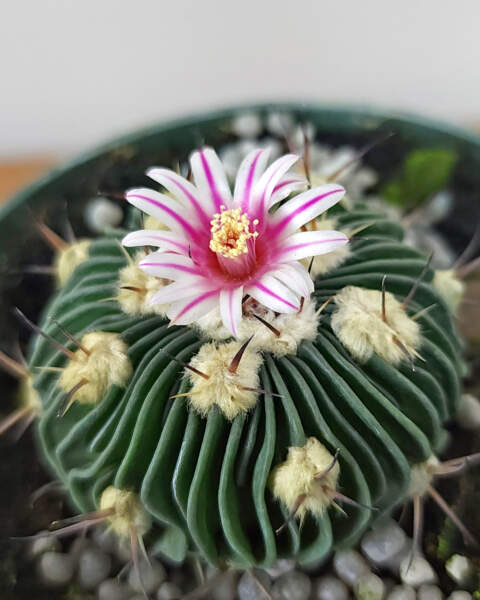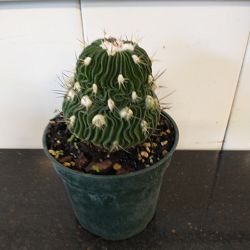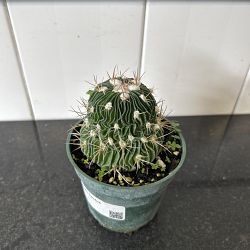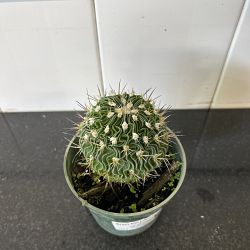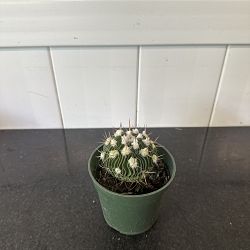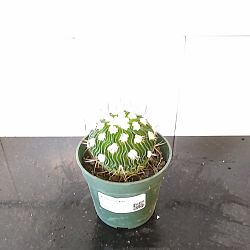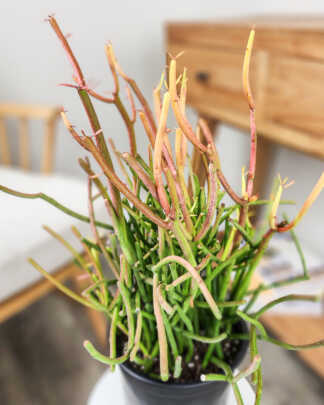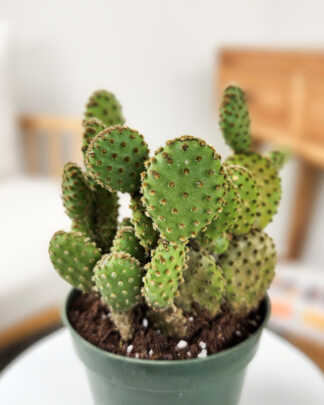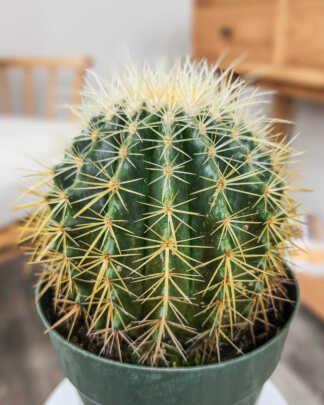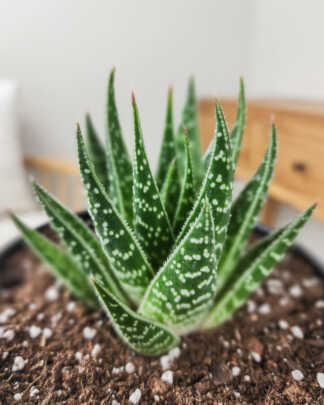Description
The Jewel of the Desert
The Stenocactus multicostatus, commonly known as the Brain Cactus due to its unique and intricate brain-like rib patterns, is a fascinating addition to any cactus collection. This rare and exotic specimen originates from the arid landscapes of Mexico, thriving in environments that mimic its natural desert habitat.
Physically, the Brain Cactus stands out with numerous narrow, wavy ribs that create an intriguing, maze-like appearance. These ribs are adorned with small, evenly spaced areoles from which spines emerge. The spines are fine and white, offering a stark contrast against the green of the cactus, enhancing its decorative appeal.
Caring for your Brain Cactus
Typically growing to about 6-10 inches in height, this cactus is perfect for indoor cultivation. It prefers bright, indirect sunlight and requires minimal watering, making it ideal for plant enthusiasts seeking low-maintenance yet visually striking plants. During the growing season, water sparingly, allowing the soil to dry out completely between waterings. In winter, reduce watering even further to mimic its natural dormant period.
The Stenocactus multicostatus blooms in spring or summer, producing small, vibrant flowers that add an extra layer of beauty to this already captivating plant. With its distinctive appearance and easy-care requirements, the Brain Cactus is a must-have for both novice and experienced plant lovers.
Light
Light is a crucial factor in the care of Brain Cactus. It thrives in bright, indirect sunlight. A south-facing or east-facing window is ideal, providing ample light without the harshness of direct midday sun. If natural light is insufficient, especially in winter months, consider using a grow light to supplement. However, avoid exposing the cactus to prolonged direct sunlight, as this can cause sunburn and damage the plant.
Water
Watering is the most critical aspect of Brain Cactus care. Overwatering can lead to root rot, a common issue with cacti. During the growing season (spring and summer), water the plant sparingly, allowing the soil to completely dry out between waterings. Use your finger to check the moisture level of the soil; water only when it feels completely dry at least an inch below the surface.
In winter, the plant enters a dormant period and requires even less water. Reduce watering frequency significantly, providing just enough moisture to prevent the soil from becoming bone dry. Always use a pot with drainage holes to avoid water accumulation at the bottom.
Brain Cactus does not require high humidity and is quite tolerant of dry indoor air. However, it’s important to keep it away from sources of direct heat or drafts, which can cause dehydration and stress.
Soil
A well-draining cactus or succulent soil mix is essential for Brain Cactus. You can purchase a pre-made mix or create your own by combining regular potting soil with coarse sand and perlite in equal parts. This ensures adequate drainage and aeration, key to preventing root rot.
Repotting should be done every 2-3 years or when the plant outgrows its pot. Choose a container only slightly larger than the current one, as a too-large pot can retain excess moisture. Repotting is best done in spring, at the beginning of the growing season, to minimize stress on the plant.
Fertilizing
Feeding your Brain Cactus will encourage healthy growth and flowering. Use a balanced, water-soluble fertilizer formulated for cacti and succulents. Fertilize once a month during the growing season, diluting the fertilizer to half the recommended strength to avoid overfeeding, which can harm the plant.
During the dormant period in winter, cease fertilizing as the plant is not actively growing and does not require additional nutrients. Resume feeding the following spring as the cactus begins to grow again.
Pest and Disease Management
Stenocactus multicostatus is relatively resistant to pests and diseases. However, it can occasionally be affected by common pests like mealybugs and spider mites. Inspect your plant regularly, especially under the leaves and at the base. If pests are detected, treat with a suitable insecticidal soap or neem oil.
To prevent fungal diseases, ensure the cactus is not sitting in damp soil. Good air circulation around the plant also helps in keeping pests and diseases at bay.

